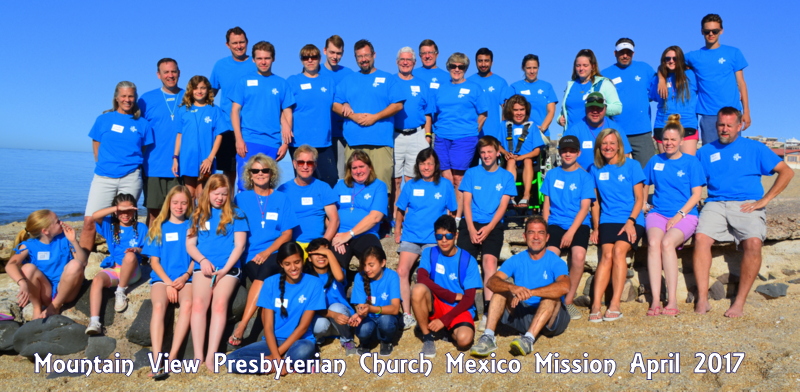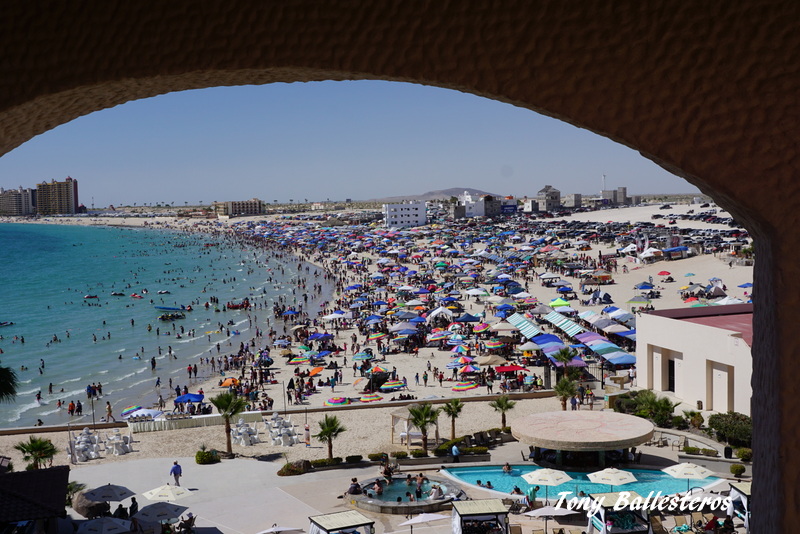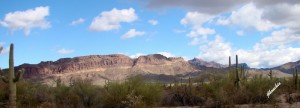 Between Ajo and Lukeville, Arizona, on your way to or from Puerto Peñasco in the state of Sonora, Mexico, lay one of the most beautiful stretches of our Sonoran Desert, the most highly vegetated desert in the world. There are miles and miles of desert floor adorned with green sprays of Ocotillo, candelabras of Organ Pipe interspersed with bouquets of Palo Verde, sprigs of Mesquite and Ironwood, all designed by nature to showcase the thousands upon thousands of towering Saguaro Cacti. The sustaining
Between Ajo and Lukeville, Arizona, on your way to or from Puerto Peñasco in the state of Sonora, Mexico, lay one of the most beautiful stretches of our Sonoran Desert, the most highly vegetated desert in the world. There are miles and miles of desert floor adorned with green sprays of Ocotillo, candelabras of Organ Pipe interspersed with bouquets of Palo Verde, sprigs of Mesquite and Ironwood, all designed by nature to showcase the thousands upon thousands of towering Saguaro Cacti. The sustaining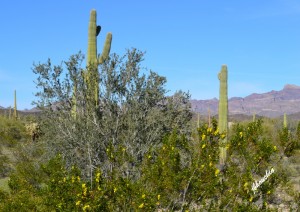 tenure of these centenarian giants create a vast senior community; a veritable Sun City South of colossal cacti casting a three dimensional frame along the base of the big rock mountains carved into the distant horizon.
tenure of these centenarian giants create a vast senior community; a veritable Sun City South of colossal cacti casting a three dimensional frame along the base of the big rock mountains carved into the distant horizon.
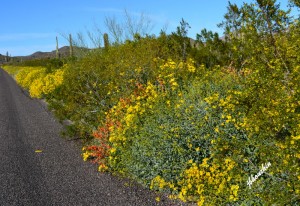 And how handsome they are! It’s this very area that adds substance to the expressions, “Getting there is half the fun” and “Stop to smell the roses.” Well, in this case, it might be the cactus blooms, creosote and jasmine to smell. If you haven’t already, just for this 15 mile drive, when the traffic is flowing at about a vehicle every couple minutes, enjoy the inspiring experience of slowing to 40 miles an hour or less just to appreciate in awe these majestic saguaro standing stalwart over their Kingdom: Sonora, the Desert. As you can see, a readily available camera would be in order as well.
And how handsome they are! It’s this very area that adds substance to the expressions, “Getting there is half the fun” and “Stop to smell the roses.” Well, in this case, it might be the cactus blooms, creosote and jasmine to smell. If you haven’t already, just for this 15 mile drive, when the traffic is flowing at about a vehicle every couple minutes, enjoy the inspiring experience of slowing to 40 miles an hour or less just to appreciate in awe these majestic saguaro standing stalwart over their Kingdom: Sonora, the Desert. As you can see, a readily available camera would be in order as well.
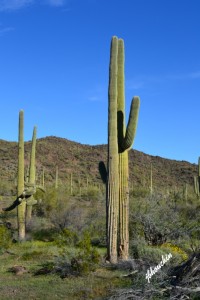 To realize these behemoth works of nature’s most intricate art live for 200 years or more and wait 40 years just to begin growing one of those iconic limbs adds to their awesomeness. Using just the slightest bit of imagination, you can bring the desert to life, visualizing the Saguaro interacting with each other, with the Mesquite, and occasionally with their cousin, the elegant Organ Pipe and with
To realize these behemoth works of nature’s most intricate art live for 200 years or more and wait 40 years just to begin growing one of those iconic limbs adds to their awesomeness. Using just the slightest bit of imagination, you can bring the desert to life, visualizing the Saguaro interacting with each other, with the Mesquite, and occasionally with their cousin, the elegant Organ Pipe and with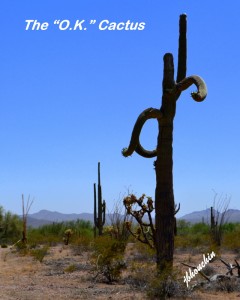
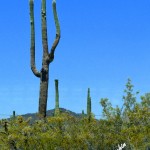 their distant cousin, the scrappy Ocotillo, even interacting with you! For example, on your way to Rocky Point, around mile post 68 you’ll see the “O.K.” cactus on the right side of the road telling you you’re on the right path to paradise! You can see others hiding in the midst of Palo Verde and Mesquite Trees, like really big kids that don’t leave home.
their distant cousin, the scrappy Ocotillo, even interacting with you! For example, on your way to Rocky Point, around mile post 68 you’ll see the “O.K.” cactus on the right side of the road telling you you’re on the right path to paradise! You can see others hiding in the midst of Palo Verde and Mesquite Trees, like really big kids that don’t leave home.
You’ll find the Saguaro rising above the tops of the Mesquite, Palo Verde and Ironwood trees because they were born beneath them, so fragile at birth they depended on the shade and moisture condensation from these “nurse” trees to survive their first five to ten years of life. After that they would grow strong, able to withstand the harsh, arid desert climate of sparse rain, flash floods, morbid wind storms and ravenous appetites of the roaming raptors and their prey that plucked the fruit and drank the liquids from cactus’ vitals to survive. It 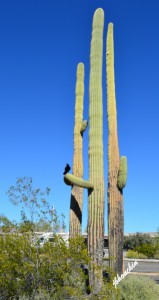 would be even worse were it not for the fortress of strong thorns that protect the Saguaro from the larger
would be even worse were it not for the fortress of strong thorns that protect the Saguaro from the larger 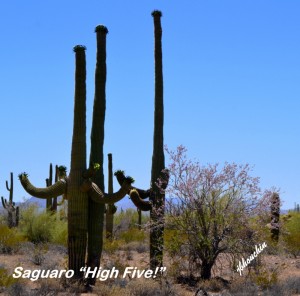 creatures, and for their ability to
creatures, and for their ability to 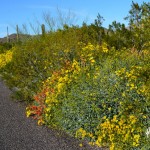 store the abundance of liquids enabling the animals to survive.
store the abundance of liquids enabling the animals to survive.
The Saguaro existence exemplifies the weave of ecological balance through which all plants and animals are interdependent for survival that is unique to the Sonoran Desert.
This blog is powered by www.sonoranresorts.mx , Jim Ringquist, Director of Sales and Marketing.


